The Biefield-Brown Effect
Science laboratories in both Europe and the US have confirmed and measured a force (Brown Effect) on charged capacitors, even when operating the capacitors in a vacuum. This removes the possibility of ionic air-currents.
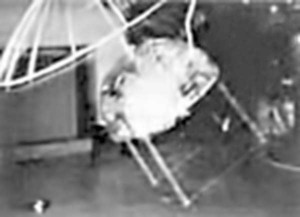
Saucer liftoff (model 2) by T. Townsend Brown and Agnew H. Bahnson at the Bahnson Company 1958. Note the high voltage arc.
Working in conjunction with Dr. P.A. Biefield, Brown found that highly charged capacitors when properly suspended showed a tendency to move relative to the gravitational force. When the poles of a freely suspended charged capacitor (even in a vacuum) were placed on a horizontal axis, a forward thrust would be produced which would move the capacitor in the direction of the positive pole. The direction of thrust would reverse in conjunction with a polarity change. This is the phenomenon known as the Biefield-Brown Effect.
Anti-gravity was demonstrated by placing the capacitor on a beam balance and charging it. When the positive pole pointed upwards, the condenser would move to a point of equilibrium, when the positive pole was pointed downwards, the balance would show a downward deflection.
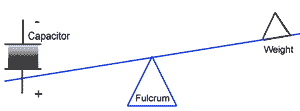
A capacitor on a beam balance
Experiments show the intensity of the effect to be dependent on several factors :
- the surface area of the plates
- the voltage differential between the plates
- the proximity of the plates to each other
- the material mass between the plates
- the dielectric capacity of the material between the plates
- read more about these factors
It is exciting to notice that these factors also correlate well with the electro gravity theory.
Divergent electrical fields
A frequently overlooked factor in the T. Brown effect is that of the divergence of the electrical field.
A new experiment shows that there is a strong kinetic force on objects in a divergent electrical field. The is no net kinetic force on objects in a uniform electric field. These experiments can be shown in the video below.

Uniform electric fields
For comparison, here is the same demonstration on some small test objects in a uniform electric field.
As you will see there are no physical forces in a uniform electric field on a neutral test object i.e. there is no Brown Effect. This neutral effect is such an important point and if frequently overlooked when trying to understand the Biefield-Brown Effect
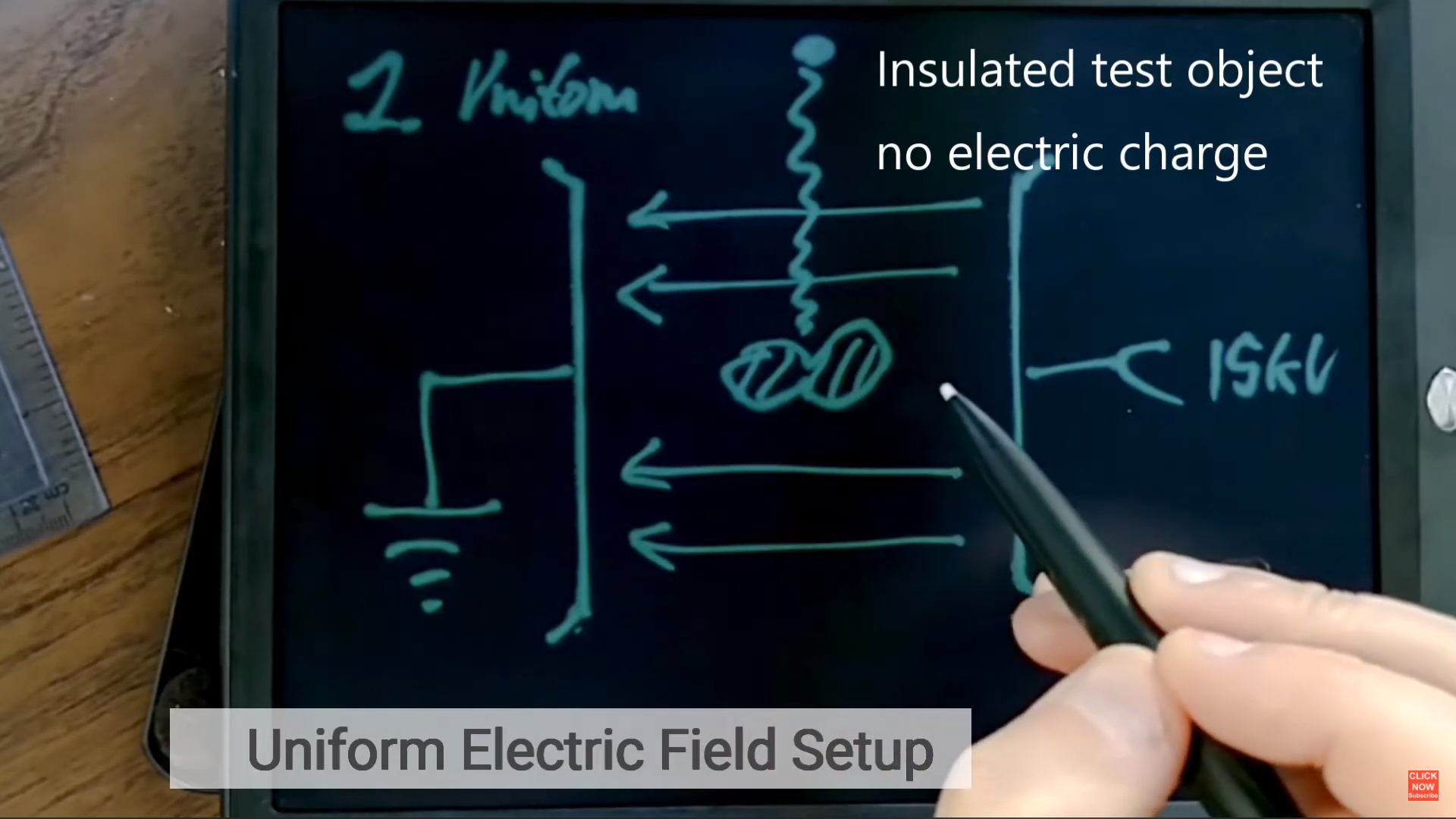
Brown Effect research in the 1950s
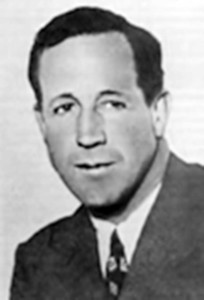
T. Townsend Brown
Beginning in the mid-1920s, Townsend Brown specially built capacitors that utilized a heavy, high charge-accumulating (high K-factor) dielectric material between its plates and found that when charges with between 70,000 to 300,000 volts, it would move in the direction of its positive pole. When oriented with its positive side up, it would proceed to lose about 1 percent of its weight.
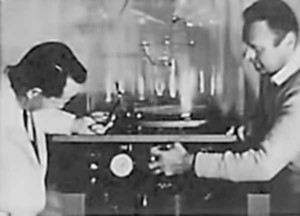
T. Townsend Brown and Agnew H. Bahnson at the Bahnson Company 1958.
Brown attributed this motion to an electrostatically-induced gravity field acting between the capacitor’s oppositely charged plates. By 1958, he had succeeded in developing a 15-inch diameter model saucer that could lift over 110% of its weight (this ref. was found on a website that is no longer active: http://www.wufoc.com/propuls.htm). Brown’s experiments had launched a new field of investigation which came to be known as electrogravitics, the technology of controlling gravity through the use of high-voltage electric charge.
Links containing more T. Brown info:
- The official Townsend Brown Wikipedia page. Much information, patents by Brown, etc.
- Researcher Jean-Louis Naudin has a great website with many results from Brown devices.




I had invented a motor,using permanent magnet ;but when I patented it in the United States? I was scammed,out of a large sums of money,this motor I named ;Dyna flux;for Dynamic Fluxtuation,but before I send the diagrams,I Notorized it,to be on the safe side;its good ,I made that move.this motor can be use for submarine,gyrocopters,boats,and airplanes ;the motor manufactures it,s own electricity,no need for Batteries,or fuel of any kind,or any out side power scources,once started it would run as long;as you want it to run,until stopped.This invention is the Mother of all inventions,there are lots of fake magnet-motors in the world,but my motor is unique;because of it,s simplicity;the secret?is in the SHAPE of the magnets.
I had invented a motor,using permanent magnet ;but when I patented it in the United States? I was scammed,out of a large sums of money,this motor I named ;Dyna flux;for Dynamic Fluxtuation,but before I send the diagrams,I Notorized it,to be on the safe side;its good ,I made that move.this motor can be use for submarine,gyrocopters,boats,and airplanes ;the motor manufactures it,s own electricity,no need for Batteries,or fuel of any kind,or any out side power scources,once started it would run as long;as you want it to run,until stopped.This invention is the Mother of all inventions,there are lots of fake magnet-motors in the world,but my motor is unique;because of it,s simplicity;the secret?is in the SHAPE of the magnets.
http://www.dipole.se
Hi Nils,
Did you ever replicate the Townsend Brown experiment claiming a change in weight of a standing capacitor, excluding any possible effects due to a diverging field or an ionic wind.
Bengt Nyman
Funny you should ask. I am in the middle of replicating some the T. Brown experiments. Stay tuned for updates.
-Nils Rognerud
I just ran across this and wanted to throw in a comment.
I did some experimentation 20 years ago. The conditions of setup was a Setra lab scale 100G. X .0001 G on a shelf 6 foot over the floor with a 2Lb test fishing line hanging down through a hole used to suspend a capacitor “ flat disk duel sided PCB 4 inches in diameter with around .35 inch etched from the edge to help eliminate coronal discharge”
This was attached to a power supply made from 2, 7KV negative ion generators. One was modified by reversing a rectifier giving a positive 7KV output.
When power was applied with the capacitor in a horizontal position the scale indicated a defined incremental movement over time. A quick decrease of a couple of mg, followed by a short delay then a slower loss of weight. A somewhat longer time delay then a steady decrease in weight to a defined point of no further change. Over the total amount of weight lost given repeated time delays between change. This says something and best of all. It is easy to replicate.
Test ran over 100 times.
The Brown Effect was experimentally proven by Valery Delamoure: https://vixra.org/pdf/2102.0130v1.pdf
Very interesting! Thanks for sharing!
-Nils Rognerud